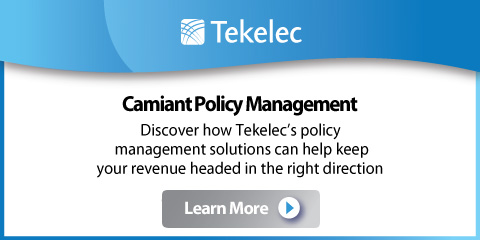|
|

Previous mobile architectures relied on two distinct domains: circuit-switched
for voice and packet-switched for data. LTE introduces the evolved packet core
(EPC), an end-to-end Internet protocol (IP) core network that creates a
converged framework for delivering packet-based, real- and non-real-time
applications across 3GPP and non-3GPP (CDMA, DSL, cable, etc.) access networks.
The 3GPP network core separates the control and data planes to improve
performance and creates a simpler, flatter architecture by moving a number of
functions from the network core to the network edge. Deploying LTE allows
operators to build and maintain one core network and to more effectively utilize
IP-based access methods such as femtocells and dual-mode devices to offload the
macro radio network. The end result: greater bandwidth, reduced latency, lower
operational costs and improved network performance for time-sensitive services
such as mobile video, mobile TV and web browsing.
|
|
Operators are looking to 4G technologies like long term evolution (LTE) to grow. |
|


level of performance.
The EPC of Release 8 requires a PCRF for some obvious reasons and some not-so-
obvious reasons. The most obvious reason is that as services are implemented
from foreign and non-3GPP networks with widely varying QoS and cost metrics, a
service will perform and cost differently based on which network the user is
located. For example, most femtocell and dual-mode services encourage use of the
local network by exempting any voice call minutes and data usage from the user’s
quota. The payoff for the operator is removing the traffic from the macro radio
network. At the same time, operators want to make sure the service works as well
if not better than the same service on the macro radio network — moving on-net
voice calls to VoIP using an over-the-top, broadband connection won’t be
successful if the calls lack clarity.
|
|
|
|
|

The Need for Policy Control
A key component of the EPC
architecture is the policy and charging
rules function (PCRF), which performs
dynamic bearer and bandwidth control,
charging rules provisioning and, in
certain cases, lawful intercept control.
The PCRF is a centrally located policy
decision point from which operators
can dynamically control usage of the
network and how much to charge for
particular services. The PCRF
communicates with core network
systems (e.g., the EPC’s packet data
network gateway or a deep packet
inspection system), applications and
operational support systems/business
support systems platforms to manage
subscriber and network information
according to operator-created business
rules. These rules define how
broadband network resources are
allocated to subscribers and
applications and under what
conditions. For example, during periods
of congestion, an operator can throttle
back bandwidth and resources to users
who agree to pay less for a non-
guaranteed class of service and
allocate QoS-backed resources to
those who have paid for the highest
|
|

The not-so-obvious reason has been demonstrated by UMTS and HSPA networks and
will continue to be an issue with the greater bandwidth of an LTE network. In
pre-UMTS networks, users could be provided as much bandwidth as the network
could support because there was so little bandwidth available to a single user.
With data rates growing tremendously, the use of multiple tiers of bandwidth and
QoS is becoming much more common — either as a further point of differentiation
for market segmentation, or to control network abuse. Looking at fixed-line
networks that are capable of very high bandwidth services shows what is likely
to be in store for LTE networks — just because the network can deliver 30Mbps
doesn’t mean customers are going to get that level of service automatically.
FTTx and DOCSIS 3.0 networks are capable of delivering up to 100Mbps at
virtually the same cost as today’s 5 to 10Mbps networks, but without government
incentives, the very high speed services generally cost two to four times what
basic service costs.
|
|
|






